The impact of advanced logistics technologies on strengthening the country’s defense potential
Opublikowane przez Petro w dniu
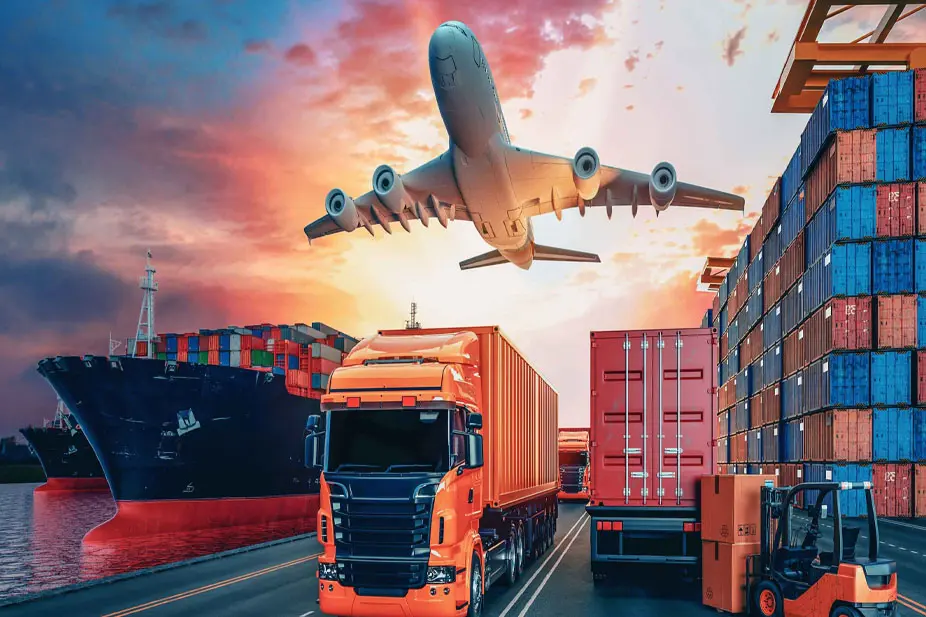

The impact of advanced logistics technologies on strengthening the country’s defense potential
1General Tadeusz Kosciuszko Military University of Land Forces, Piotra Czajkowskiego 109, 51-147, Wrocław, Poland, E-mail: marian.kopczewski@interia.pl
1The International University of Logistics and Transport in Wrocław, Sołtysowicka 19B, 51-168, Wrocław, Poland, E-mail: g.wisniewski@cbinvestment.pl
Abstract
The article focuses on the country’s defense sphere by strengthening its potential as a result of the use of modern technologies, including innovative solutions in the field of logistics and transport. Starting from praxeology, through innovation, ending with the use of participatory backcasting opportunities to predict future behavior, the authors draw attention to the need to implement unconventional fintech solutions to improve public safety. Critical infrastructure should be supported by the activities of science, business, as well as non-governmental organizations and associations. Constructive results of cooperation between various elements of the macro-environment should be considered in the context of not only recommended, but above all necessary. The results of the work carried out should add value to the state’s defense potential, using innovations and modern technologies, with the support of artificial intelligence.
KEY WORDS: logistics, defense, innovation, praxeology
1. Introduction
Troubled times require thoughtful, constructive and consistent preparation for them. Differences in the geopolitical vision of cooperation between nations on the one hand, pandemic conditions and natural disasters on the other – mobilize the development of newer forms of defense and dynamic response, including patenting. The main purpose of the article is to indicate the shortcomings and to project innovative ways of saving the health and life of the civilian population, with the support of innovative logistics solutions. Detailed objectives include a summary of current forms of responding to threats, in particular the existing processes for the evacuation of civilians in the event of an armed attack or a natural disaster. Moreover, the author set himself the goal of analyzing the effectiveness of currently implemented systems related to humanitarian logistics. Innovation, artificial intelligence, innovative solutions are changing in 2024 in all cases. Solutions that do not have the indicated values in their core are not of interest to domestic investors – governmental and non-governmental organizations. Machine learning and the heuristic algorithms supporting it determine the calibration of the human future in many spheres – including defense. Public management puts a specific entity – the State, which has the attributes of power in a unique position – in an obligation to meet the requirements and needs of its citizens. This is possible thanks to public management instruments, including: budgeting, diplomacy, planning, law and regulations, social participation, and human resources management. The indicated potential, as the author intends to prove in this article, should be appropriately scaled to gain an advantage in the field of effective evacuation of civilians in the event of crisis situations.
2. Contemporary demand for security using the potential of humanitarian logistics
Humanitarian logistics today should be considered in the criteria of a commitment to ensuring supply chains for life. This puts it in an unquestionably important position, and considerations regarding its use are consistent with the need to have a ready-made action plan for providing assistance in areas of crises and conflicts.
In order to make things more precise – important for the researcher’s further considerations – in the author’s opinion, it is reasonable to present the location of security in logistics. A. Szymonik cites the following conclusions
regarding security logistics, based on available literature, scientific articles and monographs, as part of his own analysis[1]:
- safety logistics is a system of operation with organizational and functional principles to which one must adapt, knowing about the validity of holistic-systemic dependencies;
- the logistics system is also aimed at meeting the needs of the security entity, and is composed of management, material, transport, medical subsystems as well as infrastructure;
- security affecting the spheres of logistics processes can be treated as a set of elements, which include management and executive bodies, which are linked by information and power relations in order to maintain the continuity of logistics processes.
An important differentiation of the security division is its grouping into: specific areas. They are correlated with the specific nature of logistics, i.e. dependency on place and time, with an impact on the quality of the service.
Therefore, we distinguish the following areas of interest within security: are divided as follows:
– global supply chains;
– European logistics channels and international networks (international areas);
– military logistics – national;
– city logistics, i.e. local[2].
We can associate safety with the transport industry in two ways, i.e taking into account external and internal relations. Internal concerns, among others various processes, for example warehousing, while external ones concern, for example, supplier or customer market.
3. Modern technologies in the field of humanitarian logistics
The safe flow of goods and people supports the process of economic growth, which, combined with a constantly ensured appropriate level of security, is the quintessence of the needs of modern societies. Terrorist attacks, armed conflicts, as well as ecological and natural disasters have determined the international community to invest in the development and implementation of innovative procedures that will be dynamically flexible, depending on the nature and scale of the threat, contrary to the existing ones. highly ossified, long, complicated and complex supply chains, requiring huge and burdensome involvement also in the supervision and control process[1]. The type of impact generated on logistics systems, taking into account risk and security management, is illustrated in the figure below.
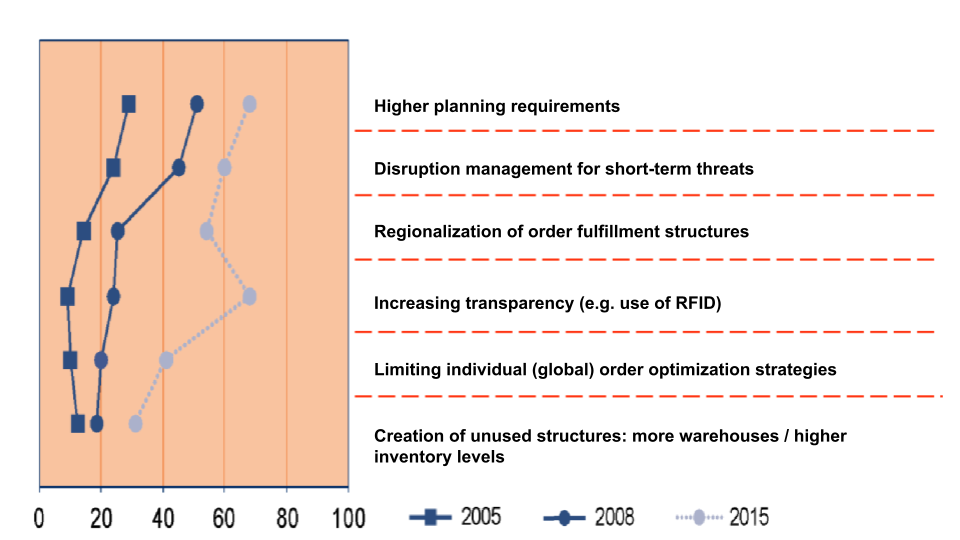
The above chart indicates changes affecting the areas of risk management, but an important aspect is their connection with other elements, such as:
- reducing inventory costs in the category of finished products, semi-finished products and raw materials;
- comprehensive harmonization and optimization of the entire supply chain.
The above are just some of the necessary areas of change that are taken into account in business, and effective procedures, with the addition of public goods, should be implemented to solve the problems of contemporary international security.
Currently, the commercialization of unique technologies and innovative military solutions, preceded by the effective finding of optimal civilian applications for them, has become the domain of the free-open market and fierce competition.
Selected modern technologies and innovative process solutions that the author paid attention to when translating military solutions into civilian logistics, and experience from natural disasters into health and life protection procedures:
- Unmanned Aerial Vehicle (UAV) and the ACE (AirCombarEvolution) program;
- Unmanned ground vehicles (UGVs);
- Autonomous Underwater Vehicles (AUV);
- ERP system (Enterprise Resource Planning);
- ASEAN DELSA (Disaster Emergency Response Logistic System for ASEAN) initiative.
Ad 1.
The use of unmanned vehicles (Unmanned Aerial Vehicle – UAV) in logistics, and above all with its impact and involvement in safety, may manifest itself in the sphere of monitoring, supervision and transport. The technology allows the vehicle to be launched without a crew member present on board. The flight path can be freely programmed, thanks to the implementation of the GPS system, and other highly advanced sensors (special digital cameras: infrared and other spectrum, night vision devices, various types of particle or gas detectors). Application in the civilian area/humanitarian logistics:
- monitoring valuable/dangerous cargo,
- carrying heavy loads – up to 226 kg, at a speed of 185 km/h, up to 4 hours of continuous flight (VTOL under the name AirMule – intelligent courier),
- identification of fire sources,
- assessment of the scale of the disaster,
- estimation of the contamination zone.
The above elements can function at a satisfactory level without endangering the health and life of people/rescuers/specialists. The graphic below presents a visualization of unmanned vehicles.
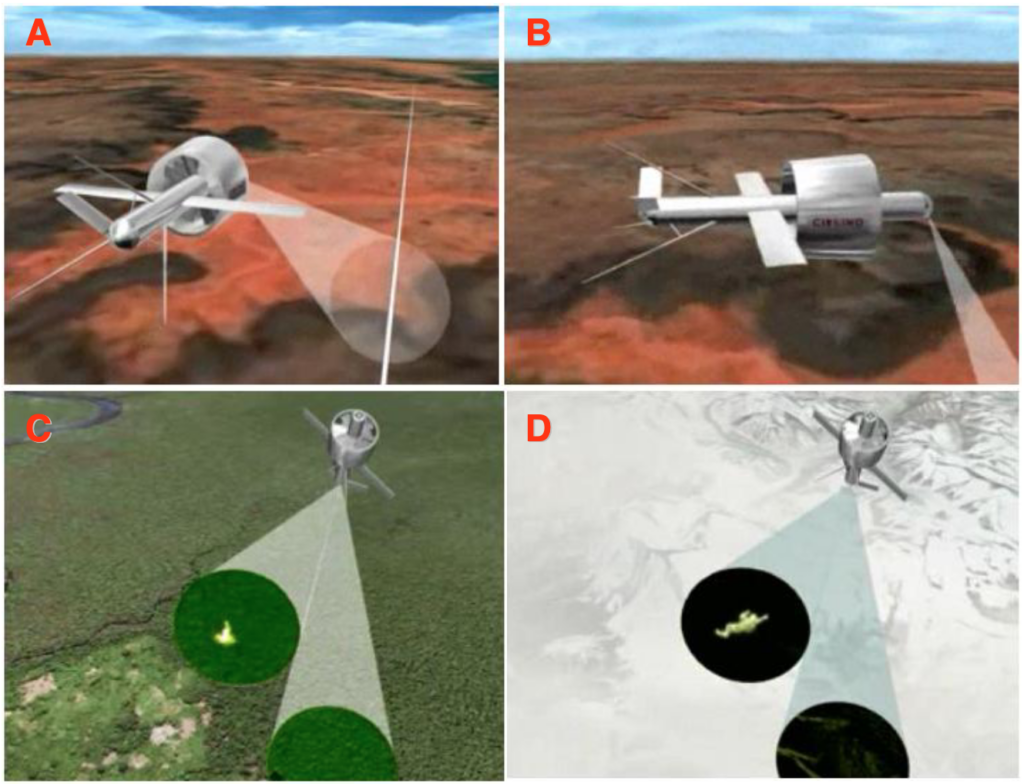
The above graphics present the use of UAVs for civilian and logistical tasks, where the illustrations marked as: A and B respectively present vehicles used to supervise transport routes, C – used to detect fire sources, D – useful in searching for missing people in the mountains.
Ad 2.
Autonomous or remotely controlled robot systems (Unmanned Ground Vehicles), i.e. unmanned ground vehicles, have a wide range of applications in logistics and saving human lives. From the outside – protection and control of the logistics infrastructure, from the inside – identification and authorization of personnel, as well as communication through microphones and loudspeakers, raises the level of security to a new level.
The concept of patrolling dedicated areas by the above-mentioned machine is called Mobile Detection Assessment and Response Systems (MDARS). Thus, the National Nuclear Security Administration/US Department of Energy found an outlet for safety processes in the use of innovative and autonomous robots designed for specific tasks, equipped with, among others, non-lethal deterrent weapons. The photo below shows selected autonomous or remotely operated vehicles (UGVs).
Fig. 3. Selected UGVs – autonomous vehicles used for special tasks
Source: Technology Development for Army Unmanned Ground Vehicles. 2003. Committee on Army Unmanned Ground Vehicle Technology Board on Army Science and Technology Division on Engineering and Physical Sciences, Washington D.C.: The National Academies Press, National Academy of Sciences, 341 p.
Ad 3.
The economic factor and security considerations influenced the possibility of making military technology available for civilian needs, which resulted in the possibility of interference with the technology of Autonomous Underwater Vehicles – AUV. Currently used ROVs, i.e. remotely controlled vehicles, are operated by an operator located on the unit. Application in the civilian area/humanitarian logistics:
- protection of logistic infrastructure in maritime transport (US Coast Guard systems – Underwater System Control, produced by CodaOctopus),
- sonar detects (search/control/detect) unwanted divers in specific zones (robot from the Remus family manufactured by Hydroid),
- equipped with acoustic and/or optical devices enable port protection and inspection of ships, as well as underwater pipelines and port infrastructure.
The figure below shows selected examples of AUVs.
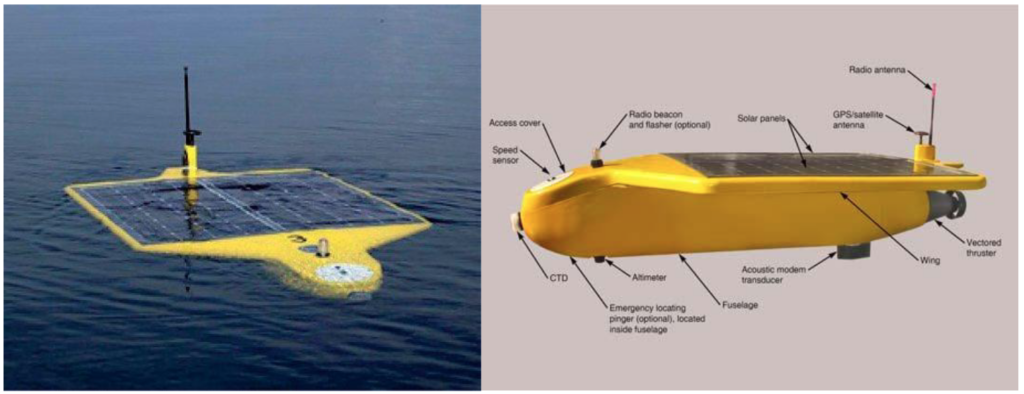
Ad 4.
Enterprise Resource Planning, i.e. the ERP system – is used for effective resource planning in the enterprise. Its task is to integrate logistics activities, which is manifested, among others, by:
- planning material needs,
- production,
- analysis of customer needs,
- forecasting and adjusting finances,
- transport design.
Analyzing data on an ongoing basis in a uniform manner results in the proper circulation of information, providing room for interpretation and recommendation of appropriate actions suggested by the application. The main benefits of using ERP for military logistics are:
- current and reliable database,
- simple access to information,
- efficient data consolidation process,
- increase in productivity and efficiency of all people participating in a given process,
- more effective forecasting of demand for current supplies,
- optimizing inventory levels,
- reducing storage costs,
- shortened equipment completion time,
- support for production, technical service, repairs and overhauls in land forces (Logistic Modernization Program – LMP/BMS C3IS JASMINE/Battlefield Management System).
Ad 5.
AHA Center logistics operations in relation to the humanitarian supply chain in the event of natural disasters, based on the example of the ASEAN regional grouping (Association of Southeast Asian Nations).
The aim of the initiative is to store stocks of aid goods at the regional grouping level, as well as to conclude preliminary contracts with suppliers and transport companies.
There are four main types of logistics operations within the humanitarian supply chain, which is coordinated by the AHA Center. They are:
- obtaining aid goods,
- storage,
- transport service,
In the prevention phase of humanitarian logistics, local suppliers definitely play the main role, while in the threat response phase – global suppliers (the reconstruction phase is a combination of both supply sources).
The factors that determine the effectiveness of operations in the humanitarian supply chain are shown in the illustration below.
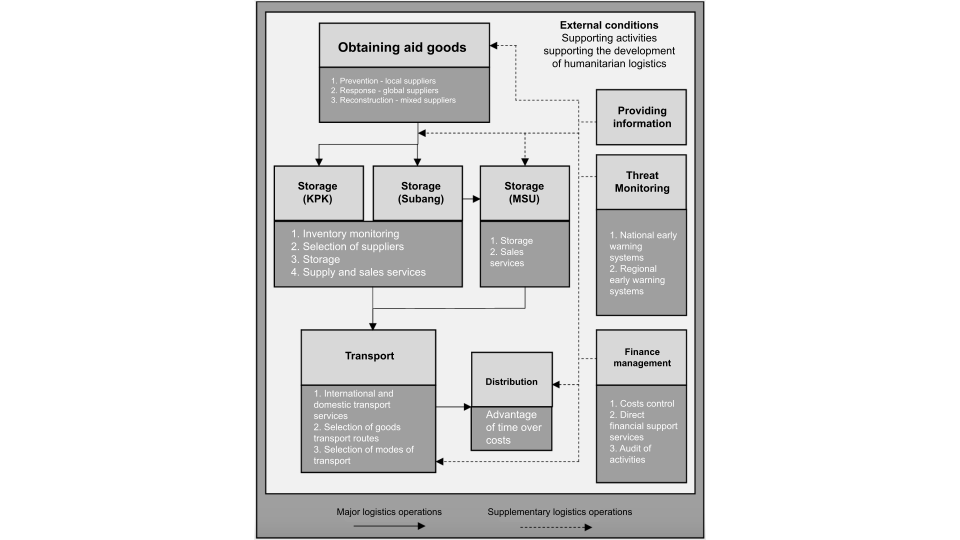
Both natural disasters as well as real armed and terrorist threats require an appropriate response, planned in advance, using patent goods that have intellectual value, using the latest technologies, innovative solutions and artificial intelligence. Nowadays, it refers not only to tangible equipment, but above all to an intelligent and innovative process that is at least one step ahead of nature or the enemy. This may or may not be the case for a given region, country or entire society, with the goal of global protection of health and life – the highest human values.
An alternative way of responding to changes in our geopolitical environment are grassroots – civilian initiatives, which, based on the example of open competitions conducted by organizations such as NATO Innovation Challenge, offer the potential to create added value for the defense of many united nations. An example of a distinguished system, classified as one of the world finalists in the capital of Slovenia – Ljubljana (2023), is the dynamic threat response platform: Go2shelterLOGIC[1]. It is A Global Open Security System For The Protection Of Civilians. The distinguished solution for integrating the potential of innovation to build flexible evacuation corridors, using modern technologies, mobile phones, tablets, supermarket screens and public transport – was also presented during the Disaster Expo Europe fair in Frankfurt (2024)[2]. The above gives rise to the conclusion that changes, conflicts, and threat situations also stimulate innovation, providing a chance to extract previously unseen potential and provide innovative support for both civilian and military logistics in times of unstable, uncertain and chaotic times. Reaching for unconventional events integrating the synergy of business, science, army and non-governmental organizations becomes very useful, which is also recommended by the authors of this study as a specific sphere for structural and consistent scientific exploration.
- Summary/Conclusions
The key to achieving social growth, which should be based on innovation, is first to understand that innovation does not have to mean only inventions, and further – advanced technologies or the creation of new products, applications and gadgets. Innovation generally involves the use of new ideas and the development of non-standard, innovative or improved products/services based on them. Humanitarian logistics and crisis operations should definitely focus on implementing innovative solutions that are one step ahead of the enemy. Regardless of whether it is another person, a nation, a country, a community or the forces of nature.
Contrary to the commonly held belief, and also contrary to the belief of supporters based on the model that is accepted as the standard of operation, among others: in Silicon Valley and venture capital, the real impact of innovation is not related to the invention of new technologies or even to introducing and implementing them on the market. The real impact of innovation lies in the continuous, successive implementation of large and small innovations, which affects inventions in such a way that they become more useful in more sectors of the economy, more reliable and much cheaper, while constantly introducing innovations in their sales, marketing and after-sales services. Defense and the lives of citizens have no price, so in the case of humanitarian logistics with the implementation of crisis response, the price should not play a major role, but the effect. which can be achieved thanks to specific investments. The sense of justice, honor and patriotism influence work for freedom, equality and the defense of the highest values, giving creativity, innovation and all the strength of commitment to national defense.
Current political leaders are sending clear signals regarding the potential for economic, economic and innovative development: in the field of industry and advanced technologies, space and peaceful nuclear energy, artificial intelligence, renewable energy and other innovative sectors. The act of innovation is what has led us to profoundly change our world and natural environment, it is what makes us human. It gives you a chance to survive, develop and defend yourself. Innovation as such is the hope in the human ability to introduce changes and the belief that changes will continue so that people can live in an increasingly better world – free, economically and ecologically self-sufficient.
[1] NATO ACT Innovation [online cit.: 2024-05-17]. Available from: https://www.act.nato.int/article/innovation-challenge-showcases-groundbreaking-innovations/
[2] Speakers on Disaster Expo [online cit.: 2024-05-17]. Available from: https://www.disasterexpoeurope.com/speakers/robert-sadowski/
References
- Bujak, A. 2012. The use of innovative technological solutions in logistics, transport and crisis response in the context of security, Poznan: Logistician, Łukasiewicz Research Network – Poznań Institute of Technology, Poznań, 412 p.
- Cieślarczyk, M. 2009. Theoretical and methodological foundations for examining the problems of state security and defense, Siedlce: AP, Siedlce 149-150 p.
- Jacyna, M.; Szaciłło, L. 2017. Selected aspects of risk management in rail transport, Warsaw: Scientific Works of the Warsaw University of Technology, 166 p.
- Marcinkowski, J. 2019. Factors of effectiveness of logistic operations of the humanitarian supply chain in the event of natural disasters on the example of the ASEAN group, Katowice: Economic Studies, Scientific Journals of the University of Economics, 60 p.
- Pokusa, T. 2022. Humanitarian logistics as a social challenge of today, Materials Management and Logistics, Warsaw: PWE, 16 p.
- Sienkiewicz, P. 2015. Theory and engineering of systems security. Security systems engineering, Warsaw: PWE, 10-11 p.
- Straube, F.; Pfohl, H. 2009. Global Networks in an Era of Change. Environment, Security, Internationalization, People, Hamburg, 91 p.

